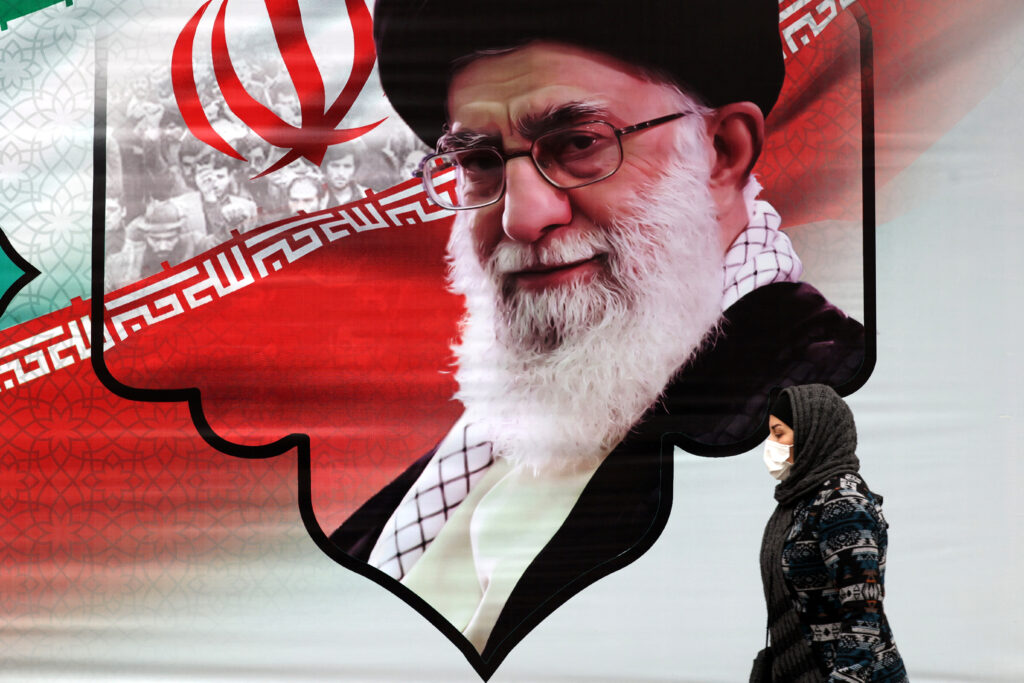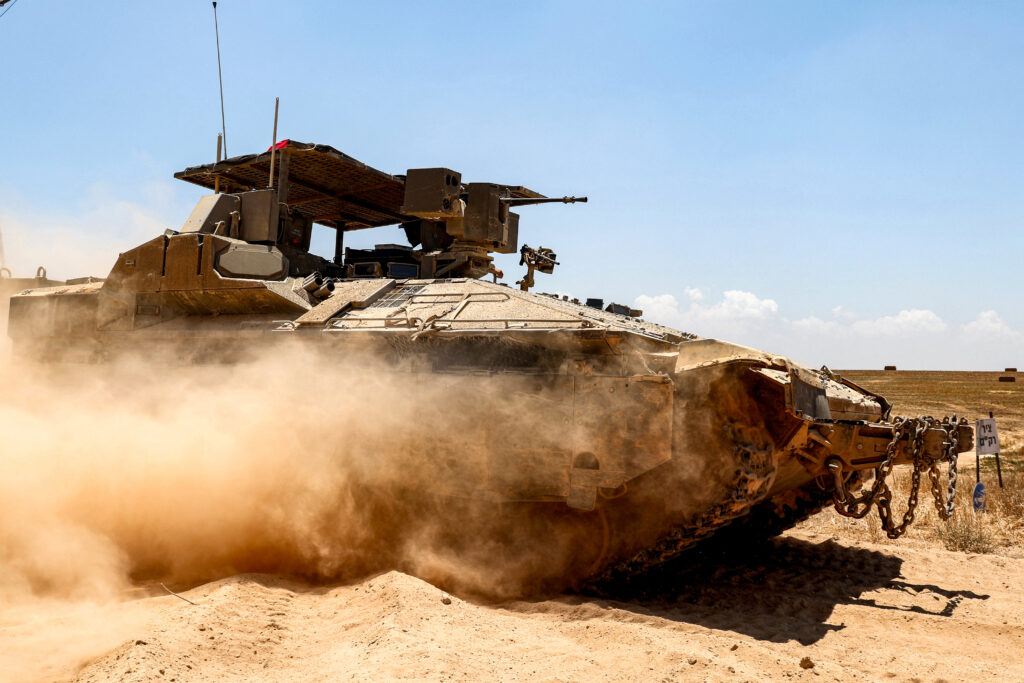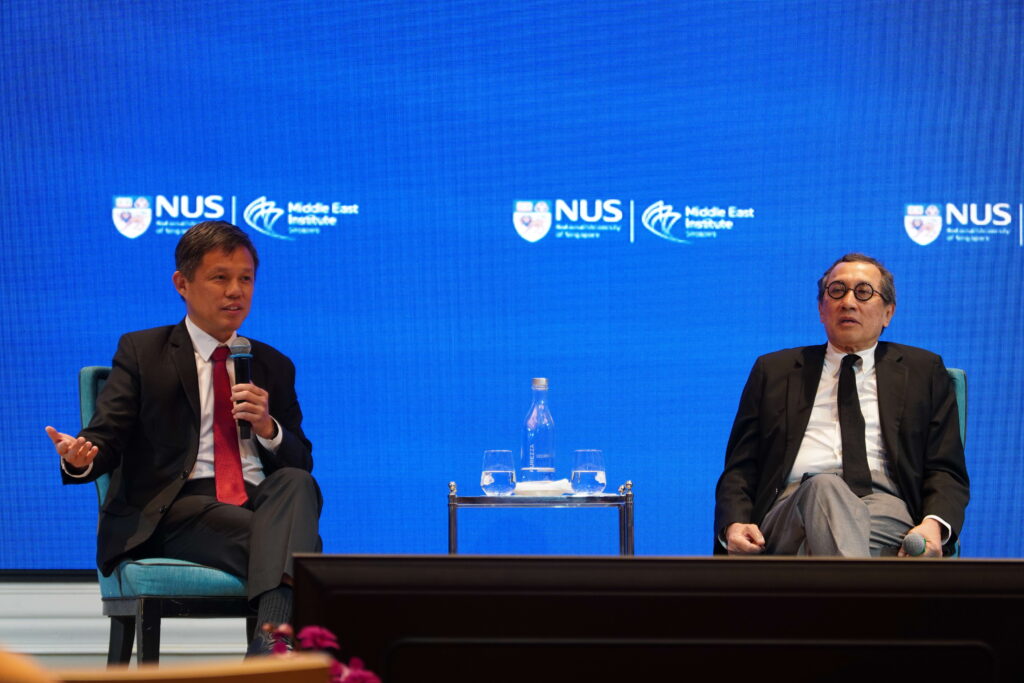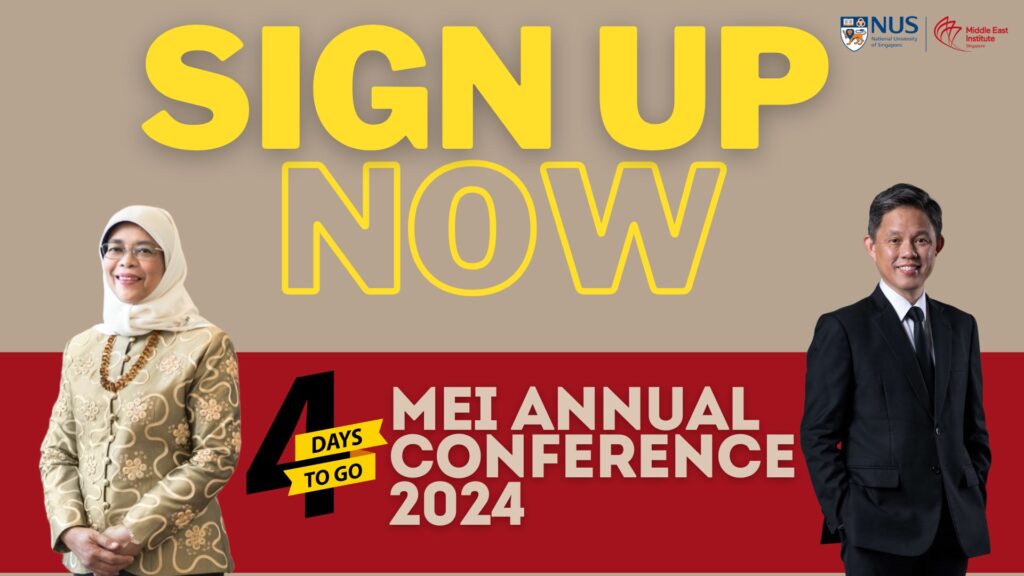Iran’s Regime is Running Out of Answers
- - January 19, 2023

By Gyorgy Busztin, Visiting Research Professor, MEI-NUS
With protests in Iran about to enter a fifth month, with no let-up in sight, the increasingly brutal response of the Tehran regime to the demonstrations reflects its inability to provide an adequate response to popular demands.
The demonstrations, sparked by the death of 22-year-old Mahsa Amini while in the custody of the morality police, have been met by a wave of government repression which has claimed some 500 lives, and up to 20,000 arrests. Several of those arrested have been charged, convicted, and executed.
The protests, the most serious challenge to the theocratic regime since its inception, provide a clear indication of the widening rift between society and the ruling elite. While the mandatory hijab rule was an early target of the demonstrators’ ire, this has now morphed to include economic concerns, corruption, and an overall lack of civil liberties.
Iranians, especially the young, have contrasted the great natural wealth of their country with the stark reality of widespread unemployment, falling living standards, poor service delivery, and power cuts due to gas shortages in a country that is home to one of the world’s largest gas deposits. Much of the economic hardship being piled on Iranians, of course, is the result of the regime’s pursuit of erratic policies, most notably its quest for a nuclear weapon.
The clearest indication of the system’s failure to regain control over the street was the deployment of the Islamic Revolutionary Guard Corps (IRGC), the regime’s choice of last resort for repression, to help the Basij militia in crushing protests, especially in the turbulent minority areas of Iranian Kurdistan and Baluchistan, at opposite ends of the sprawling country. The IRGC had previously been on the sidelines, and its deployment marks an effort by the regime to tighten the screws on protesters.
The Iranian regime’s continued failure to address its citizens’ political yearnings was exacerbated by its actions before last year’s presidential election, when it cynically eliminated even token opposition from the contest, setting the stage for the current unrest. The Guardian Council, an arch-conservative body composed predominantly of octogenarians, weeded out candidates to ensure that their preferred pick, the former Chief Justice Ebrahim Raisi, would sail through the election. In doing so, it extinguished any hope that political reforms would be generated inside the system. In response, Iranians stayed away from the polls in droves, resulting in the lowest election turnout in the Islamic Republic’s history. As one Iranian analyst put it: “By failing to link modernisation with democratisation, the regime has created an urban middle class that lacks genuine and legal paths for political participation, leaving street protests as one of the few instruments for voicing political demands and expressing grievances”.[1]
Left with little choice, the people of Iran took to the street to vent their frustrations after the spark provided by Ms Amini’s death. With no opposing voices left in the establishment to provide alternatives, the regime had no answer to the protests, even as it scrambled to utilise some former reformists to push a permissive narrative, promising dialogue that never came. In a parallel move, the government turned to its usual playbook in a vain appeal to nationalism: It blamed the United States and Israel for instigating the protests. The protestors’ chief demands, the abolishment of the morality police and the rescinding of the mandatory hijab law, were left unaddressed, and later refused wholesale, adding fuel to the fire. As things stand now, the hijab law is set to be reinforced, not relaxed.[2]
Flight to an Unwieldy Alliance
Facing mounting political isolation from the international community and human rights groups, Tehran turned to the two powers which turned a blind eye to its repression, Russia, and China.
Russia is a natural partner for the Iranians in the “fraternity of the isolated”: Moscow is itself a target of sanctions for its unprovoked aggression in Ukraine. Now, the pair have embarked on a deadlier embrace. Iran has provided Russia with its Shahid killer drones for the Kremlin’s campaign against civilian targets in Ukraine[3]. The cooperation between Moscow and Tehran will soon flow the other way, after Iran’s acquisition of advanced Sukhoi Su-35 jets,[4] modernising its ancient air force and thus tilting the regional strategic balance.
Russia could also be of some use to Iran in the future. It sits on formidable hard currency reserves, and could be a creditor of last resort to Iran. Both countries also share strategic ambitions in Syria and the South Caucasus — they took the side of Armenia in its conflict with Azerbaijan, a neighbour Iran is markedly unhappy with over its refusal to kowtow to Tehran, its alliance with Turkey, and, perhaps most infuriatingly, its developing ties with Israel.
Iran-China ties are much more complex. Despite promises of multi-billion-dollar investments, the elevation of ties to “Comprehensive Strategic Partnership” level, and rumblings about further strengthening the partnership, the proof is in the pudding. China drew an angry reaction from Tehran after President Xi Jinping hewed to the Gulf’s position on Iran’s nuclear programme, and the United Arab Emirates’ dispute with the Islamic Republic over strategic islands in the Strait of Hormuz, during his visit to Riyadh last December.[5] Adding insult to injury, China also promised to help develop Saudi Arabia’s nascent nuclear programme.[6] The message was clear: China’s partners in the Gulf Cooperation Council are much more important to it than Iran. While Beijing may be a salve when it comes to Iran’s diplomatic and economic isolation, Tehran will have to deal with its self-inflicted wounds without Chinese help.
JCPOA — Dead in the Water?
The costliest price of Iran’s war on its own people is the seemingly irreversible unravelling of the JCPOA negotiations. For years a central element of Iran’s domestic and foreign agenda, the nuclear deal is now as good as dead. United States President Joe Biden has all but dismissed it, while European Union politicians have made it clear that no deal is feasible while Tehran trains its guns on its people. US Special Envoy for Iran Robert Malley did not bury the JCPOA outright, but said Washington would “concentrate on Iranian weapons supplies to Russia and on opposition protesters in the country”[7]. Without a renewed deal, the panacea the regime promised its people is no more, and suffocating sanctions will remain in place, ensuring continued hardship for Iranians.
Furthermore, the apparent collapse of the JCPOA coincided with the re-election of Benjamin Netanyahu in Israel, and closed the cycle of what the Israeli right has repeatedly called a blind Western policy of appeasement. Concerns abound about what Israel will do if Iran acquires the bomb. Boosted by the Abraham Accords — as much an alliance against Iran as anything else — — Israel may be even more prone to radical solutions than during Mr Netanyahu’s last go-around, and it will take much pressure from Washington to avert such an outcome, particularly since any action from Tel Aviv would ignite a conflagration, which would doom the protesters along with the rest of the region.
The Road Ahead
The spontaneous and un-organised nature of the protests is their strength — and weakness. Frequently compared to “flash mobs”, they are more difficult for the authorities to bring under control than a coherent protest,[8] simply because there are no leaders to lock up. Still, there are clearly well coordinated elements within the movement, among them the protesters’ refusal to fall for the government narrative, which sought to tar demonstrators from minority groups as separatists.
Facing a ruthless and entrenched elite bent on preserving its power, the demonstrators’ only hope is that popular anger will rise to uncontrollable levels. Iran’s long history is rich in such episodes, the most memorable being the Constitutional Revolution of 1905-7, when a (progressive) clergy-led Iranian society organised a country-wide strike to protest against foreign encroachment and conniving by the ruling monarch. The toppling of the Shah was another such instance. It remains to be seen if the people of Iran, many still undecided, choose to go down this road, but the country in the meantime will see more violent repression, hardly a solution to Iran’s protracted conundrum.
However these protests end, the regime has gone down a rabbit hole it cannot clamber out of easily. The Islamic Republic has lost the trust of its young people – the most significant bloc in a country where the bulk of the population is under 30 — and now relies on a diminishing, calcified support base that matches its leadership’s demographics. More than any other group, young people want choice, better prospects, and agency, all of which they have been denied in violent fashion. At the end of the day, an adrift, enraged people shorn of hope could prove more dangerous to the regime than any number of protests.
Image Caption: An Iranian woman walks past a mural showing Iran’s Supreme Leader Ayatollah Ali Khamenei in the capital Tehran on March 9, 2022. Atta Kenare / AFP
About the Author
Dr Gyorgy Busztin is Visiting Research Professor at the Middle East Institute, NUS.
A career diplomat and an academic, he served, between 2001 and 2011, as Hungary’s ambassador to Indonesia and subsequently, Iran. In 2011, Dr Busztin was appointed deputy envoy of the United Nations in Iraq, responsible for the political, analytical, electoral and constitutional support components of the UN’s mission in Iraq. He served at the level of assistant secretary-general until October 2017.
Dr Busztin holds a degree in Arabic history from Damascus University, Syria and a Doctorate in Arabic language and Semitic philology from Lorand Eotvos University in Hungary. In addition to his native Hungarian, he speaks English, French, Arabic, Farsi/Dari (Persian), Malay (Indonesian) and Russian. He believes strongly in political and intercultural dialogue and has engaged leading politicians, intellectuals, religious leaders and representatives of civil society.
End Notes
[1] The Root Cause of Anti-Regime Protests in Iran: Modernization without Democratization, Ali Alfoneh, AGSIW, 10/1/2023
[2] “In fact, there are all sorts of contradictory statements by officials. On Tuesday, the hardliner Judiciary appeared to demand stricter hijab enforcement. Whether the contradiction are a part of a cynical policy or the result of genuine disagreements among the top echelons of the regime, is not clear”. Protests Force Iran’s Khamenei to Suggest Moderation Over Hijab, Tuesday, 01/10/2023, Iran International
Author: Maryam Sinaee
[3] In flagrant violation of UNSC 2231, as pointed out by the US Ambassador to the UN recently. US Mission to the UN Website, Remarks by Amb. Linda Thomas-Greenfield at the UNSC Briefing on Russia’s War against Ukraine, 13/1/2023
[4] https://eurasiantimes.com/leaving-the-west-baffled-iran-confirms-purchasing-24-russian/
[5] Xi’s China-Arab summit success in Riyadh raises temperatures in Iran, SCMP, 14/12/2022
[6] AGSIW website publication, 8 December 2022
[7] US Focus on Iran is Thwarting Weapons Aid to Russia, Envoy Says, Bloomberg, 4/12/2022
[8] “The constant flare up of scattered protests poses a political cost for the Islamic Republic” Ali Alfoneh, AGSIW, ibid.
More in This Series
More in This Series
- Jean-Loup Samaan
- - July 11, 2024
- Aisha Al-Sarihi, Ehsan Rasoulinezhad, Jinseok Sung
- - June 20, 2024








